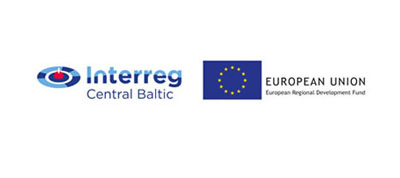A queue management app to reduce truck queues, a digital traffic prediction service and a ride sharing service for ship passengers. These are just some of the smart mobility pilots with which the City of Helsinki has sought to streamline traffic in the West Harbour area.
The rapidly increasing traffic volume of Helsinki’s West Harbour has made the area the busiest passenger port in the world, with nine million passengers traveling between Helsinki and Tallinn every year. In addition to passengers, 650 trucks drive through Jätkäsaari peninsula every day.
The FinEst Smart Mobility project, and the objective of which is to streamline traffic in Helsinki’s West Harbour and Tallinn’s Old City Harbour, seeks solutions to the traffic challenges with the aim of reducing emissions, noise and other negative impacts of traffic in the ports and cities of Helsinki and Tallinn. The City of Helsinki has tackled the topic in collaboration with its innovation company Forum Virium Helsinki by organising pilots in Jätkäsaari, focusing on how these challenges could be solved with the help of digital services. These pilots are now almost complete and the results are already in.
Tailored innovation for the needs of West Harbour
“The ecosystem provided by the project has allowed participating companies to develop tailored innovations for the needs of West Harbour and to utilise shared knowledge with other companies contributing to the project. The collaboration between companies and public administration has also proven how important the exchange of information is for the further development of services and for the end-user experience. When it comes, for example, to the accuracy of the traffic situation prediction of the West Harbour, having access to data on actual ferry traffic arrival times and being able to utilise that data is absolutely essential,” says Project Manager Suvi Hänninen from the City of Helsinki.
“The project allows the City of Helsinki to improve its competence in regard to the development and practical application of agile digital services. The accumulated know-how is especially valuable in areas such as the West Harbour, where the limitations of the physical environment necessitate flexible solutions in addition to traditional infrastructure building to ensure a high-quality living and business environment,” she continues.
“Streamlining traffic is a very concrete example of how Helsinki can utilise openly shared data collected from multiple sources and harness it to serve the city’s residents and companies. By doing so, we are developing Helsinki into the most functional smart city in the world with the help of data,” summarises Development Director Pekka Koponen from Forum Virium Helsinki.
Solving congestion with smart services and data
As regards heavy traffic, the project has tested a queue management system for trucks that is based on individual arrival times. With the help of the GoSwift application, drivers are kept updated on the ideal departure time and route from their starting point all the way to the harbour. The idea behind the application is to minimise time spent at the harbour and easing congestion resulting from trucks arriving in Jätkäsaari, where the available parking area is limited.
Meanwhile, a new API created by Fleetrange provides real-time schedule, location and arrival data on the ferry traffic between Helsinki’s West Harbour and Tallinn, supporting data users and app developers to optimise traffic flow and reliability. In this way, the API also allows ferry traffic to be better integrated into other traffic.
Analysis on land traffic
Another area of development is the collection and analysis of information concerning land traffic. The first step has been the testing of a real-time traffic fluency model and a smart traffic management system developed by Infotripla, which can help in the preparation for and reduction of traffic peaks caused by arriving and departing ferries.
The project has also involved the piloting of a ride sharing service produced and developed by Kyyti Oy, of which objective has been to make it faster for the ferry passengers to travel from West Harbour to Helsinki Airport, when compared to public transport.
Collaboration with the Estonian Road Administration is also continuing. One of Forum Virium’s partner coders is currently facilitating a project in which the Finnish digitransit.fi journey planner will be implemented in Estonia’s national journey planner (peatus.ee).
Read more about the FinEst Smart Mobility project

The objective of the FinEst Smart Mobility project is to reduce emissions, noise and other negative impacts of traffic in the ports and cities of Helsinki and Tallinn. The aim is to tackle these challenges through intelligent traffic solutions. The project will run until autumn 2019.
The FinEst Smart Mobility project has a budget of EUR 1.8 million and it is co-funded by the Interreg Central Baltic programme. The project is being carried out by the City of Helsinki, the City of Tallinn, ITL Digital Lab, the City of Vantaa, Forum Virium Helsinki, and the Estonian Road Administration, with Helsinki Region Transport as associated partner.
Forum Virium Helsinki is the innovation company of the City of Helsinki, which aims to build Helsinki into the most functional smart city in the world in collaboration with companies, the scientific community and residents.
Photo: Janne Rinne
Further information

Pekka Koponen
#smartcity #opendata
#MaaS #API #IoT
Mobile: +358 40 501 7114
pekka.koponen(at)forumvirium.fi
